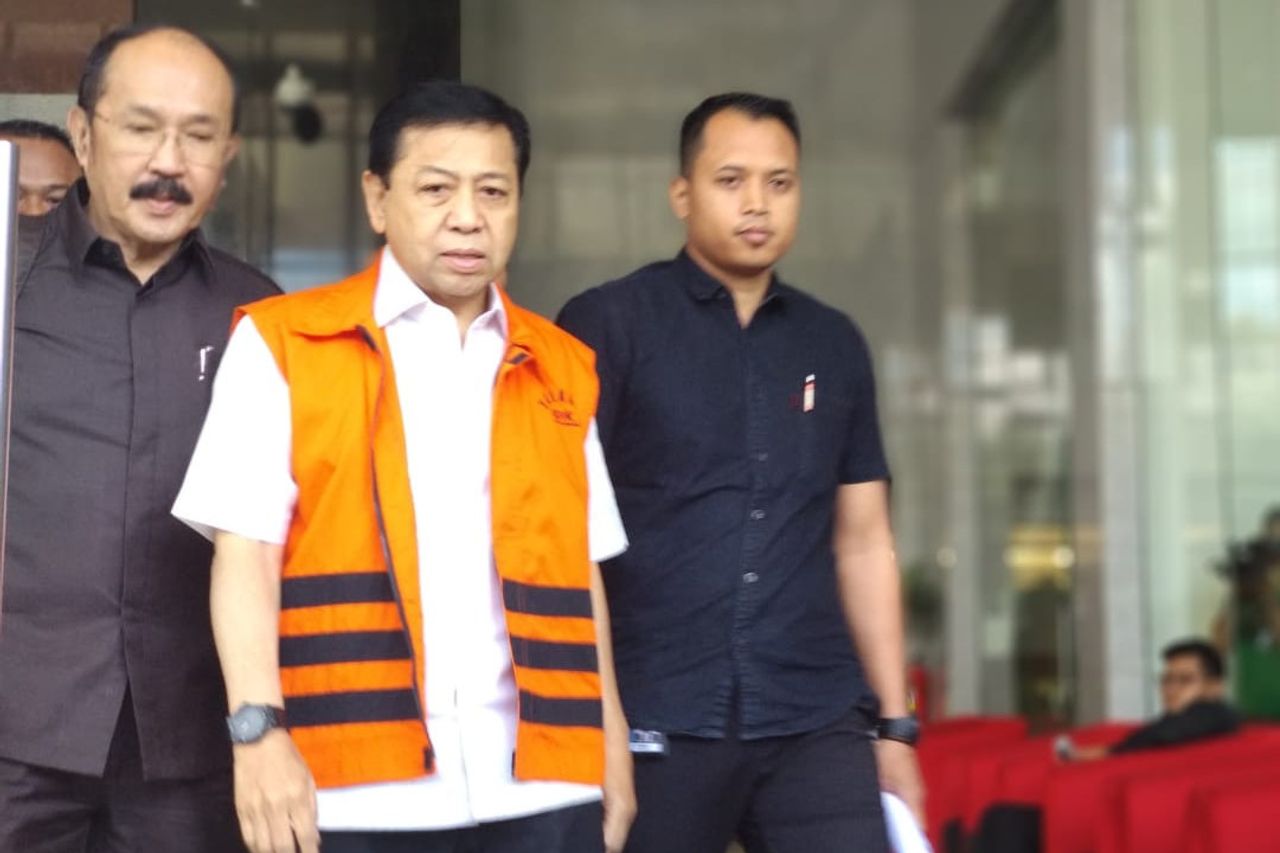The Corruption Eradication Commission's Orange Vest That Does Not Make A Deterrent Effect

JAKARTA - Since 2013, on May 28 to be precise, the Corruption Eradication Commission (KPK) has implemented a new policy by replacing prisoners' white vests with orange or orange vests. The reason was that the KPK at that time wanted a deterrent effect on perpetrators of corruption.
Initially, detainees were required to wear a white jacket bearing the KPK logo. However, this jacket is considered to still accommodate the desire to appear trendy by the corruptors. For example, Miranda Goeltom, who at that time became a defendant in the bribery case for traveler checks related to the election of Bank Indonesia Senior Deputy Governor (DGS).
Even though it says 'Corruption Eradication Commission detainees', Miranda was able to combine the white jacket with a large black belt combined with a black and white batik skirt. Not only that, he combined his appearance with high heels made of shiny black leather.
Reflecting on Miranda's appearance, it seems that there is no shame shown even though he is suspected of being involved in a corruption case. In addition, Miranda's appearance was also considered to agree with the criticism of many parties who asked that the color of the prisoner's jacket be changed immediately.
After the phenomenon of the fashionable prisoner jacket, the anti-graft agency then rethinked to create a new prisoner jacket that could provide a deterrent effect. In mid-2013, the KPK leadership assigned the Head of the Household Section, Harry Hidayati, to redesign the prisoner's jacket.
He designed various prisoner jackets in different colors such as green, striped, and orange. Finally, the five KPK leaders who were then in office agreed to choose the orange jacket of the prisoner.
"We chose the orange color so that they were caught by the KPK prisoners. If it is blurred, the orange color is easily recognizable and bright, ”said one of the KPK leaders at the time, Bambang Widjojanto, as reported by kpk.go.id on Thursday, January 9.

Apart from the orange color, the KPK leadership at that time agreed to add three black stripes on the vest to indicate that corruption was truly an extraordinary crime.
After it was agreed upon, Harry then went to the Tanah Abang market to buy clothing materials and make a vest pattern and sew it. The corruption suspect who wore the orange vest for the first time was Lutfi Hasan Ishaaq, who was suspected of corruption in importing meat.
Although it is said to have a deterrent effect, the corruption crimes investigated by the KPK continue to increase. This is evident through the performance report of the KPK leadership for the 2016-2019 period which states that hand-arrest operations (OTT) were carried out 87 times over four years and ensnared 327 initial suspects.
The OTT carried out by the KPK has never stopped, only the main case. From the OTT, the Corruption Eradication Commission always gets clues that can lead to allegations of other cases. The details are, in 2016: the number of OTTs was 17 times with 58 suspects. Then in 2017: the number of OTTs was 19 times with 7 suspects.
Furthermore, in 2018: the number of OTTs was 30 times with 121 suspects, and in 2019 the number of OTTs was 21 times with 76 suspects.
Then in the leadership of the Chairman of the KPK for the period 2019-2023 Firli Bahuri, this anti-corruption agency also carried out a hand arrest operation (OTT) against Sidoarjo Regent Saiful Ilah and his subordinates and most recently, the KPK arrested KPU commissioner Wahyu Setiawan and currently investigations are still being carried out.
